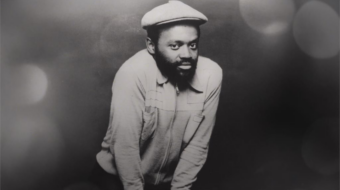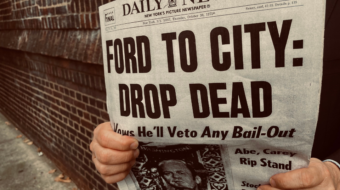
The delightful computer-animated feature Abominable is one of those rare movies that will enchant adults and children alike. Set mostly or entirely in present-day China, the 97-minute movie about an Abominable Snowman starts out in Shanghai, then embarks on a road trip throughout the People’s Republic. Various destinations in the “Middle Kingdom” are vividly brought alive via exquisite, eye-popping, jaw-dropping animation.
Abominable is a co-production of Dreamworks and Shanghai-based Pearl Studio—the two studios previously collaborated on the 2016 3D computer-animated Kung Fu Panda 3. With its Eastern locales and predominantly Asian cast, one could say that SoCal-based Dreamworks is “pandering” to Chinese ticket buyers in the world’s most populous country, where what appears to be a form of state capitalism has produced an enormous urban middle class with disposable income.
Interestingly, Abominable’s villains are Westerners voiced by British comedian Eddie Izzard (who was actually born in Yemen, where his parents worked for British Petroleum) as the mad zoologist Burnish, and American Sarah Paulson (Emmy Award winner for portraying Marcia Clark in American Crime Story) as Dr. Zara, although they do have Asian underlings doing their nefarious biddings. Nevertheless, just as viewers of all generations will enjoy this animated epic, so will theatergoers of every ethnicity.
Unlike recent movies where Caucasians cast in Asian and nonwhite roles fell afoul of ethnic critics—such as Emma Stone in 2015’s Aloha and Scarlett Johansson in 2017’s Ghost in the Shell—Abominable’s casting seems to avoid those eyebrow-raising landmines and to be more culturally correct. Chicago-born actress Chloe Bennett (the ABC spy series Agents of S.H.I.E.L.D. and upcoming musical screen adaptation of the 1983 movie Valley Girl), whose father is Han Chinese and mother is a white American, gives voice to Abominable’s teenaged female lead, Yi. Born Chloe Wang, she lived in Beijing for a spell and learned Mandarin. Fifteen-year-old Asian-American actor Albert Tsai (ABC’s Trophy Wife, Dr. Ken) provides the voice for the adorable boy Peng who wants to be accepted by the big kids and loves to eat the tasty pork buns cooked by Nai Nai (the venerable Shanghai-born actress Tsai Chin, Auntie Lindo in The Joy Luck Club, gives voice to Yi’s grandma). Michelle Wong (of TV’s Scandal, ER) voices Yi’s mother. Ninety-year-old film veteran James Hong (1982’s Blade Runner, 1987’s Hawaii-made Black Widow) does the yakking for Abominable’s Yak Leader.
In a bit of extremely clever, canny casting Tenzing Norgay Trainor (2019’s Clueless) plays the teenager Jin. He is the grandson of the world-famous Tenzing Norgay, the Nepalese-Indian Sherpa mountaineer who climbed Mt. Everest with Sir Edmund Hillary in 1953 and who at one point claimed that his father had actually seen Yetis in the Himalayas twice.
The title character (voiced, or rather grunted, by Joseph Izzo of Kung Fu Panda 2), of course, is derived from the Yeti or “Abominable Snowman” which, according to legends, purported sightings, evidence such as oversized footprints (which Sir Edmund claimed to have seen), etc., supposedly covertly inhabit the Himalayas—a sort of Bigfoot of Asia’s (and Earth’s) highest mountains. My sole misgiving is that Abominable’s snowman has powers that, so far as I know, Yetis have not been reported and purported to possess according to folklore, alleged encounters, etc. Oh well, it’s a cartoon, not a documentary!
The animated feature by writer/co-director Jill Culton (she worked on 2001’s Monsters, Inc. and 2005’s Toy Story) and Todd Wilderman (who’d worked on Harry Potter and Stuart Little pictures) is also rather derivative of classics, such as 1933’s King Kong and 1982’s E.T. In Abominable Shanghai has replaced Manhattan as the urban center where the humongous, hairy ape-like monster runs amok. And like Steven Spielberg’s Extra-Terrestrial, take one guess where the creature yearns to return to? The snowman saga also has a sentimental, albeit lovely, message about family and friendship.
Nevertheless, Abominable is absolutely charming and original enough in terms of its beauty as well as story to be a must-see movie for intergenerational audiences. It isn’t marred by an overabundance of scatological jokes, as in other feature-length animation productions. And it perpetuates the growing trend of animated features where lead (human) characters are nonwhite, including Aladdin (Arab), Moana (Polynesian), Coco (Latino), Spider-Man: Into the Spider-Verse (Black) and The Princess and the Frog (Black).
Some may consider the following observation to be racially off the wall, but let an iconoclastic film historian make this observation: Since Walt Disney first drew him in 1928, Mickey Mouse has clearly been at least part Black. Yet, although the beloved cartoon character clearly has partially Black skin color, it’s curious that Mickey has never been regarded, perceived and identified as being Black by racially blinded U.S. audiences, or audiences anywhere so far as I know—perhaps because Mickey has not been depicted as having the celluloid stereotypical characteristics of African Americans or sub-Saharan Africans.
Be that as it may, Abominable’s snowman is all-white in appearance (although culturally Himalayan), and a sheer joy to behold for children of all ages. Take the tykes to this family-friendly film, even if this is just an excuse to treat yourself to a great time at the movies.
Abominable opens Sept. 27. The trailer can be seen here.
Ed Rampell is moderating the “Enter Stage Left: Theater, Film and TV for a Better World” panel at the Left Coast Forum on Oct. 13.










